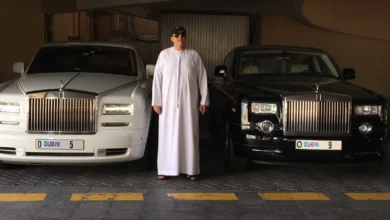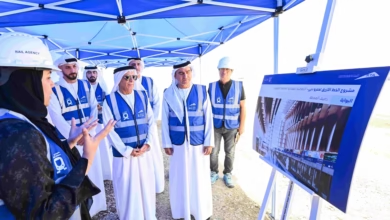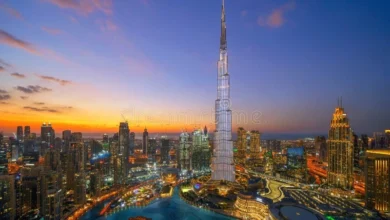
Saudi Arabia’s New Tourism Plan Targets Family Vacations, Budget Stays
Saudi Arabia plans to attract 150 million tourists annually by 2030, moving beyond its luxury-focused approach to welcome middle-class travelers. The kingdom’s previous strategy centered on high-end experiences. Flagship Red Sea coastal resorts charged around $2,000 per night, which left few options for budget-conscious visitors.
The kingdom’s tourism strategy has undergone a major change with expanded tourism facilities. Crown Prince Mohammed bin Salman’s Vision 2030 plan aims to vary the economy beyond oil dependence. The push for affordable accommodations aligns with Saudi Arabia’s goal to double pilgrim visits to Mecca and Medina to 30 million by 2030. Mass tourism growth throughout Riyadh will create new opportunities for saudi airlines as visitor numbers climb. Ten new resorts will open soon on the Red Sea’s Shebara Island that offer a “much lower price point” compared to existing luxury options.
This move toward middle-class tourism could revolutionize Saudi Arabia’s economy and global image. The country has implemented infrastructure developments and policy changes to support this bold vision.
Saudi Arabia shifts focus from luxury to middle-class tourism
Image Source: Travel And Tour World
Saudi Arabia’s Tourism Minister Ahmed Al-Khateeb announced a new direction for the country’s tourism strategy at the UN Tourism Organization’s General Assembly in Riyadh. “We started with building luxury destinations for luxury travelers. And we have already started building destinations for the middle class and upper middle class,” Al-Khateeb said. He emphasized, “We will not ignore this segment.”
The kingdom has moved away from its previous focus on expensive luxury resorts. They are now building a balanced tourism ecosystem that caters to travelers with different budgets. Al-Khateeb mentioned that ten new resorts will open soon on the Red Sea’s Shebara Island, offering a “much lower price point” than current luxury options.
This expansion into middle-class tourism supports Crown Prince Mohammed bin Salman’s mass tourism vision under Vision 2030. Saudi Airlines will play a vital role to support the increased visitor traffic as the kingdom adds more diverse offerings.
The Gulf Cooperation Council countries are working on a Schengen-style visa system. The system should launch “in 2026, maximum 2027” to boost regional tourism, which has become more popular worldwide.
The tourism sector now adds more than AED 40.39 trillion to the global economy and creates more than one in ten jobs worldwide.
Vision 2030 drives mass tourism and economic diversification
Image Source: www.vision2030.gov.sa
Vision 2030, led by Crown Prince Mohammed bin Salman, has made tourism the life-blood of Saudi Arabia’s economic diversification strategy. The kingdom already shows remarkable results across all regions.
The tourism sector contributed 4.5% of GDP and 7% of non-oil GDP to Saudi Arabia’s economy in 2023. Revenue reached 153.61 SAR Billion in 2024, up from 135 SAR Billion in 2023. The sector employs more than 960,000 people and will create over one million jobs by 2030.
Saudi Arabia reached its original tourism target early and raised the bar higher. The new goal aims to welcome 150 million visitors annually by 2030. The kingdom leads all G20 nations in international tourist arrival growth.
Saudi Arabia has become a magnet for global events. The kingdom secured both Expo 2030 and the FIFA World Cup 2034. These achievements cement Riyadh’s status as a rising tourism powerhouse.
Tourism will contribute 10% to the national GDP by 2030. Vision 2030 has reshaped tourism from a small industry into a key economic force. This transformation reduces oil dependence and creates growth opportunities throughout the Saudi economy.
Saudi expands infrastructure to support affordable travel
Image Source: Bloomberg.com
Saudi Arabia’s infrastructure development is moving faster to support the kingdom’s ambitious tourism goals. Ruaa Al Madinah stands as the most important project in Medina, spanning 1.5 million square meters of mixed-use development that will provide 47,000 hotel rooms near the Prophet’s Mosque.
Saudi Airlines (Saudia) plans to add more than ten new destinations in 2025, including Vienna, Venice, Athens, Bali, and Antalya. The airline reported 16% growth in passenger transport last year. This expansion supports the kingdom’s national aviation strategy that aims to connect 250 destinations by 2030.
The new “GCC Grand Tours Visa” will change regional travel fundamentally. Travelers can visit all six GCC countries with a single Schengen-style visa application. The unified visa system, originally scheduled for late 2025, will launch in 2026. Officials celebrate this as “a major milestone achieved after years of collaboration”.
Religious tourism drives substantial investment in Mecca and Medina’s infrastructure. The expanded Grand Mosque now welcomes double its previous capacity at two million pilgrims. Religious tourism generates AED 44.06 billion annually. These improvements support Vision 2030’s ambitious target of hosting 30 million pilgrims annually.
Saudi Arabia is at a turning point as it expands its tourism focus beyond luxury travelers to welcome middle-class tourists. This strategic move shows a mature approach to building sustainable tourism. The kingdom has moved beyond $2,000-per-night resorts and now sees the big potential in different tourism segments.
Vision 2030, led by Crown Prince Mohammed bin Salman, has shown remarkable results. Tourism added 4.5% to GDP and 7% to non-oil GDP in 2023. The sector created over 960,000 jobs across the kingdom. The goal of attracting 150 million visitors yearly by 2030 seems more achievable with these positive trends.
The kingdom’s infrastructure development continues at an impressive pace. Projects like Ruaa Al Madinah will create 47,000 hotel rooms near the Prophet’s Mosque. Saudi Airlines has added ten new destinations to its network. The new GCC Grand Tours Visa will make regional travel easier, creating a Middle Eastern version of Europe’s Schengen system.
Religious tourism remains the life-blood of Saudi Arabia’s strategy. The Grand Mosque’s expansion has doubled its capacity to two million pilgrims, which strengthens the kingdom’s role as the center of Islamic pilgrimage.
Saudi Arabia is changing from an oil-dependent economy into a diverse tourism powerhouse. This development creates unmatched opportunities for travelers with all budgets to experience the kingdom’s rich heritage and modern growth. The country now positions itself as a detailed tourism hub that welcomes visitors from every economic background.






